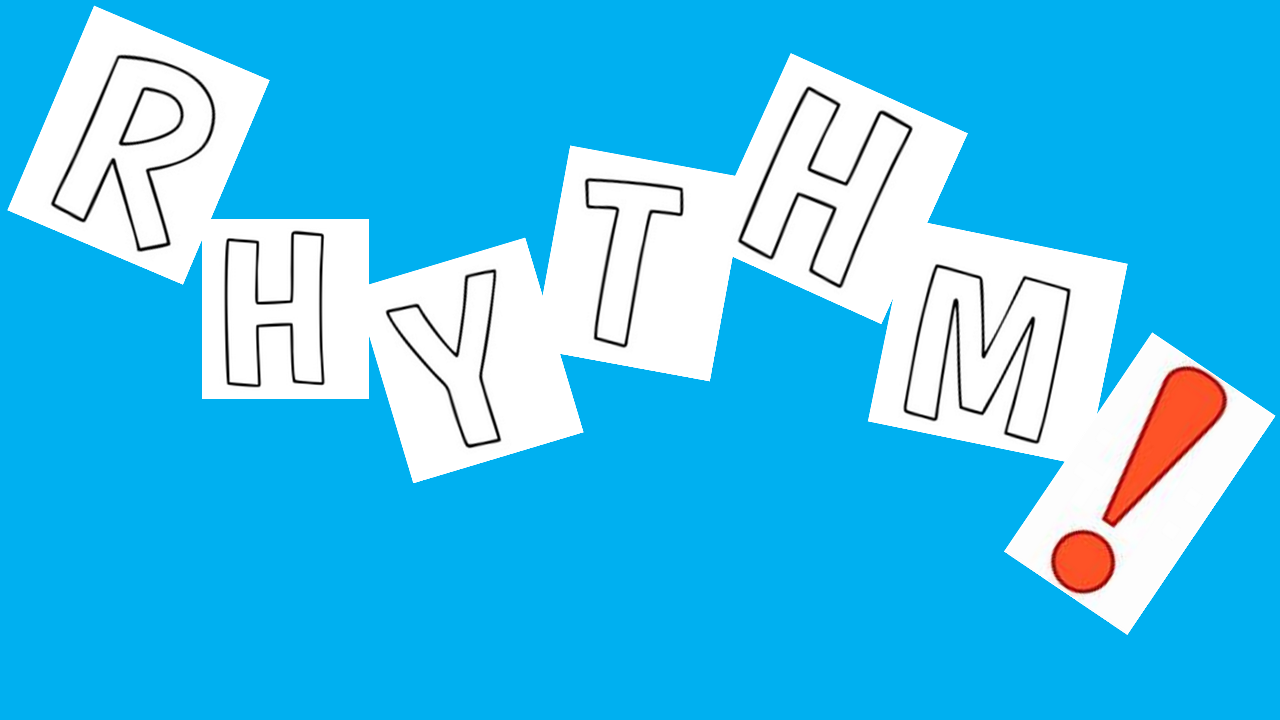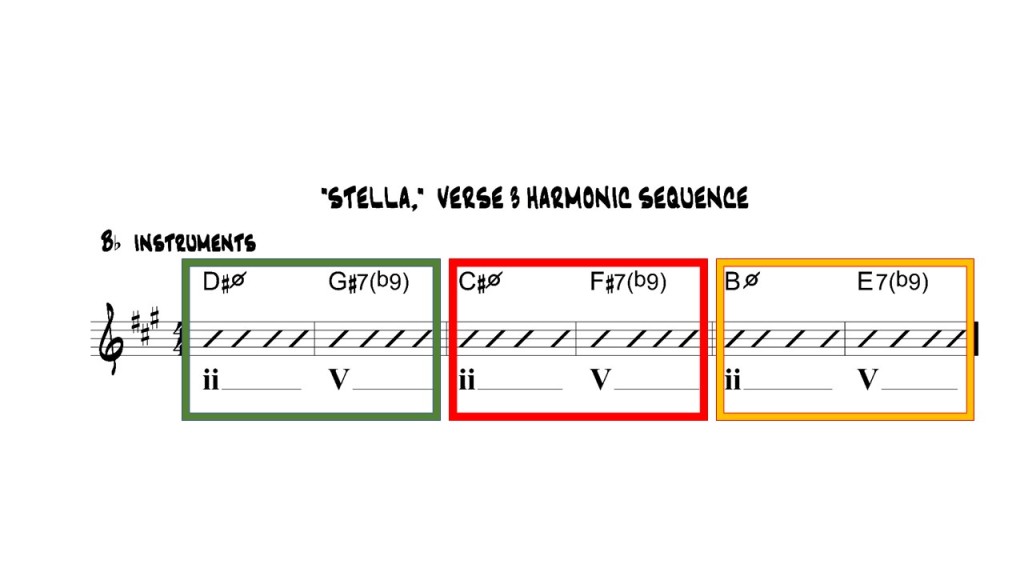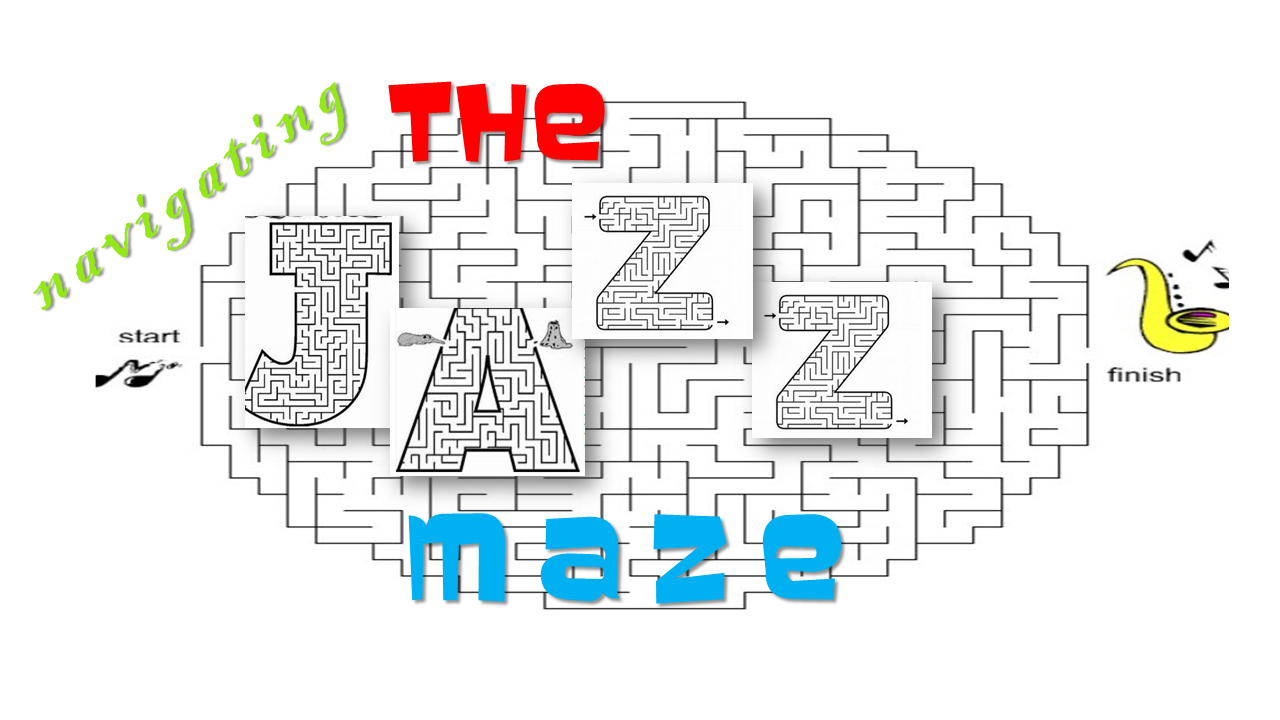 If you (or your students) struggle with playing swinging jazz rhythm, this video will go a long way toward gearing up those important rhythm chops. CLICK HERE TO WATCH THE RHYTHM VIDEO.
If you (or your students) struggle with playing swinging jazz rhythm, this video will go a long way toward gearing up those important rhythm chops. CLICK HERE TO WATCH THE RHYTHM VIDEO.
Tag: jazz phrasing
I feel so much more like I do now than I did when I first got here.*
Jazz gigs seldom turn out exactly as we expect them to. Since jazz is, by definition, an improvised art, this should come as no surprise. It’s a maze which often thrills, sometimes shatters, and continually amazes us.
Let’s say, for example, that you arrive at the gig late, stressed, un-showered, and unready to perform. It’s at this point that a fan drops a hundred dollar bill in the tip jar, Herbie Hancock asks to sit in, and your first solo provokes a standing ovation. In your dreams, right?
The nature of jazz will, at times, lead to the unexpected, to exciting innovation, to surprise, to joyful discovery. …Occasionally, it leads nowhere. After all, life’s mazes do include blind alleys. Just the same, we “press on regardless” (as my father often preached on rainy hikes), in search of the perfect note, aye? Continue reading “I feel so much more like I do now than I did when I first got here.*”
Where’s One?
When a novice improviser strays too far from the beat, the band often quips, “Where’s One?”, meaning “Are you lost?”
As improvisers, we seek fresh, innovative approaches which still retain the coherence needed to keep listeners’ interest. Sonny Rollins famously used “motivic development” to simultaneously add unity and variety to his improvisations.
Here is a melodic phrase which is then repeated verbatim. What makes the second statement of this phrase sound different from the first?

Notice the “rhythmic offset”: the initial statement of the theme begins on beat 3 (we’re in 12/8), while the second statement begins on beat 12. Jazz players call this “playing on the other side of the beat.” If your band mates are sufficiently skilled to avoid getting lost, playing on the other side can be used to stunning effect.
Note also that the second statement of our melodic phrase – while melodically identical to the first – is accompanied by chords from a different key. We might refer to this as a “transposed harmonic setting.” The new harmonies give the melody a distinctly different sound, as if stage lighting on an actor had been changed from red to blue.
Blues in Benny Carter’s Heart
 Benny Carter blessed us with an amazing solo on the 1938 recording of his composition “Blues in My Heart.” The entire performance is miraculous, but one four-bar passage in particular knocked me out, prompting me to shed that phrase in all 12 keys. Here’s the lick:
Benny Carter blessed us with an amazing solo on the 1938 recording of his composition “Blues in My Heart.” The entire performance is miraculous, but one four-bar passage in particular knocked me out, prompting me to shed that phrase in all 12 keys. Here’s the lick:
Benny’s rhythmic vitality propels the piece, his melodic contour is unique in all of jazz literature, his harmonic inventiveness is preposterously original, and his crystal clear tone is infectious. Here is my transcription of those amazing four bars.

Here is a slowed down recording of that phrase in all 12 keys:
If you want to play it yourself, click the “continue reading” button to see a complete chart.
Stan’s Stella Sequence

Yesterday, I discovered a sequence in Stan Getz’s 1952 Clef recording of “Stella by Starlight,” (MGC 137). The three-by-three format unfolds as Stan finishes the bridge on his first chorus. Here it is:

If you’ve studied “Stella,” you know that the final 8 bar section of the form contains the intriguing 6-bar harmonic sequence shown below:

As shown here, that harmonic sequence features 3 iterations of 8 beats each, for a total of 24 beats. But Getz begins his amazing melodic sequence 2 beats before the passage shown above, so he needs to fill 26 beats.
The diagram below illustrates the incredible way he accomplishes this Herculean feat. Stan’s motif of six eighth-notes covers 3 beats and is repeated three times on each of three starting notes. But on the second iteration of round two, he leaves out a beat. Thus, the total episode comprises 9 + 8 + 9 = 26 beats. Even at 160 beats per minute, Getz is able to execute this monumental feat so smoothly that it sounds effortless.

How Sonny Rollins Practices
How has the quarantine impacted your chops? This no-gigs lock down has been absolutely disastrous for many working musicians financially. But our chops don’t have to take the same hit our wallets are taking, if we’ll explore innovative approaches to practicing.
My practice strategy is similar to what Sonny Rollins described when asked how he practices. Sonny said:
“I start out playing things I know to get the blood flowing. Those things are often described as ‘clichés.’ You begin with the cliché so you can get the process in motion. Once the process is in motion, ‘thinking’ gives way to ‘playing.’ At that point, you get out of the way and let the music play.”
Over the past decade, I’ve written down over a thousand licks I keep in a notebook, each of which I woodshed in all 12 keys. Some of these ideas come from transcribed solos of the masters, but most simply emerge as I’m connecting with the horn. Practicing joy. I encourage you to try this technique, as it supercharges your chops, strengthens your improvisatory muscle, and turns you into a composer.
Here’s a lick you can play with, in order to get started down that path. The tonal center of this phrase baffled my friends and me at first. Eventually, I settled on a basic ii-V-I progression, which perfectly fit the melodic contour. If you want more background, leave a comment at the bottom of this post.
To see a chart, click on “CONTINUE READING” below.
“Remember” Hank Mobley’s “Soul Station”?
 The road to dynamic, expressive improvisation is paved with practice and listening. Hank Mobley’s near perfect solo on Irving Berlin’s “Remember” from his classic LP “Soul Station” is filled with profound lessons on phrasing, rhythm, tone, melody, pacing, and development. Here is just one of the great ideas you will encounter when studying this wonderful recording.
The road to dynamic, expressive improvisation is paved with practice and listening. Hank Mobley’s near perfect solo on Irving Berlin’s “Remember” from his classic LP “Soul Station” is filled with profound lessons on phrasing, rhythm, tone, melody, pacing, and development. Here is just one of the great ideas you will encounter when studying this wonderful recording.
 As always, we recommend learning the phrase in all 12 keys. Practice with the audio file found below. Continue reading ““Remember” Hank Mobley’s “Soul Station”?”
As always, we recommend learning the phrase in all 12 keys. Practice with the audio file found below. Continue reading ““Remember” Hank Mobley’s “Soul Station”?”
Jazz Articulation, Accents, and Proper Tonguing
Some saxophone & clarinet students have difficulty with jazz articulation, because they have not learned to tongue properly. They begin each note with a constriction in the throat, which sounds as if the student were humming into the mouthpiece. The beginning of the note is fuzzy and indistinct. Continue reading “Jazz Articulation, Accents, and Proper Tonguing”


